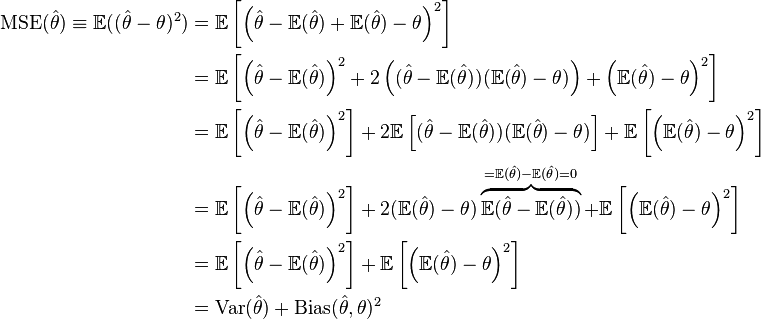First, it's known that MSE can be decomposed into variance and bias^2 of the estimator:
But on many sources a 3rd term called "irreducible error" should also be a part of the decomposition, which is supposed to describe the noise in the population model/ true relationship.
For example:
$Err(x) = \left(E[\hat{f}(x)]-f(x)\right)^2 + E\left[\left(\hat{f}(x)-E[\hat{f}(x)]\right)^2\right] +\sigma_e^2$
However, the first proof says that the MSE is described completely by the variance and bias. How do I make sense of this seeming contradiction?

